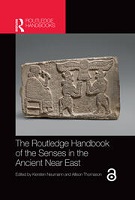Chapter 20 The smells of eternity
Proposal review
Aromatic oils and resins in the Phoenician mortuary record
Abstract
This chapter surveys and analyses the aromatic substances associated with burial and the preservation of the dead in the Iron Age Phoenician Levant (c. 1100–300 BCE), as part of an exploration of the lost smellscapes of the ancient world. First, Phoenician vocabulary related to smelling and pungent substances is outlined and investigated. Then, a review of coastal Levantine archaeological and textual evidence, along with comparanda from the wider Mediterranean world, is used to establish the range of smells and substances that would have been associated with mortuary practice at this time. While oleo-resins in use in the burial record overlap to some degree with those used in everyday life—in perfumes, religious practice, and other uses of scented oils and incense—the unique constellations of aromatics used to inter the dead highlight the importance of these deeply mnemonic sensory elements in our understanding of the Iron Age past.
Keywords
senses in the near east, senses in the ane, sensory experience in the near east, senses in mesopotamia, sensory studies in the near east, sensory studies and ancient urbanism, dress and the senses in the near east, the body and sensory studies in the near east, sensory studies and ancient dress, sensory studies and the ancient body, ritual and the senses in the near east, death and sensory studies in the near east, ritual and sensory studies in the near east, ritual and the senses in antiquity, death and the senses in antiquity, emotions and cognition in the near east, sensory studies and cognition, sensory studies and language in the near east, sound in the near eastDOI
10.4324/ 9780429280207-25ISBN
9780367235284, 9781032065663, 9780429280207Publisher
Taylor & FrancisPublisher website
https://taylorandfrancis.com/Publication date and place
2022Grantor
Imprint
RoutledgeClassification
Ancient history


 Download
Download